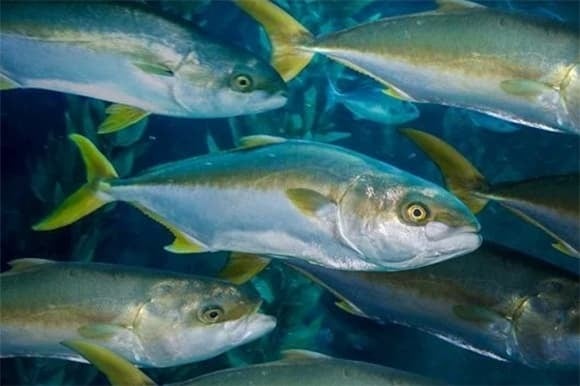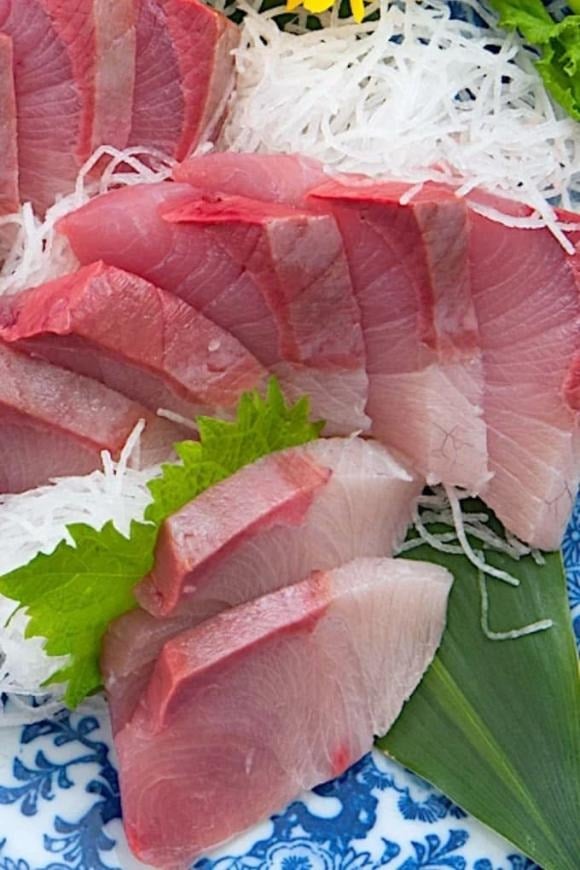Vietnam made a significant mark in the aquaculture industry by becoming the first country in the world to successfully artificially breed amberjack (Seriola dumerili) – a highly valuable marine fish species, favored by many markets.
Amberjack – The Promising “Blue Gold” of Vietnam’s Aquaculture Industry
Amberjack, also known as yellowtail or striped amberjack, is a highly valuable marine fish species, particularly popular in Japan, where it is a common ingredient in premium sashimi and sushi dishes.
Japan is currently the largest amberjack farming country in the world, with an annual production of approximately 150,000 tons, accounting for 90% of global production. Apart from Japan, this fish is also highly favored in South Korea, the USA, and Europe.

Despite its high nutritional and commercial value, amberjack has a relatively low price in Vietnam, ranging from 80,000 to 120,000 VND/kg. In contrast, Japanese amberjack can reach prices of 900,000 to 1,800,000 VND/kg.
Previously, amberjack farming in Vietnam faced challenges due to its dependence on natural breeding, leading to unstable development. However, in April 2025, the Institute of Aquaculture Research I made a groundbreaking achievement by successfully artificially breeding amberjack for the first time. The experiment yielded approximately 3 million eggs, with a fertilization rate of over 90%.
This success not only marks a technological breakthrough in artificial breeding but also opens up opportunities for the development of industrial-scale marine farming, enabling Vietnam’s aquaculture industry to more effectively exploit this valuable marine resource.
The Potential for Industrial Marine Farming with Amberjack
Amberjack has a rapid growth rate, reaching approximately 3kg in weight within just 18 months of farming. This species is particularly suitable for offshore cage farming, reducing pressure on coastal areas and promoting sustainable marine farming.

The successful artificial breeding of amberjack gives Vietnam control over the quality of its stock, no longer relying on natural sources. This paves the way for the development of an integrated farming-processing-exporting chain, especially targeting premium markets such as Japan, South Korea, the USA, and Europe.
This achievement is not only a technological advancement in aquaculture genetics but also a foundation for modern, efficient, and sustainable marine economic development. It highlights the crucial role of science and technology in enhancing the value of Vietnam’s agriculture and aquaculture industries.































